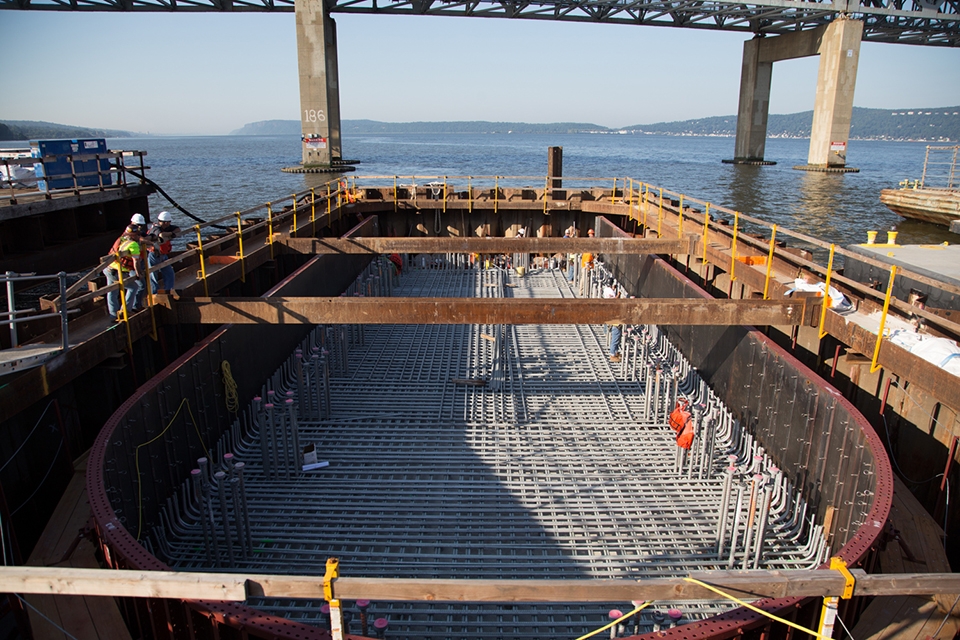
The construction of river crossings present an engineering challenge: how to build in the water?
To overcome that hurdle on the New NY Bridge project, Tappan Zee Constructors, LLC (TZC) is employing a bridge-building technique that dates back to Ancient Roman times: cofferdams. Cofferdams are enclosed work areas in water environments that enable crews to perform their work as though they were on dry land.
TZC is using cofferdams made of z-shaped steel sheets for the foundations closest to the shoreline. In order to establish work areas extending far below the Hudson River’s surface, the cofferdams must be able to withstand enormous water pressure from the river. Steel sheets are driven deep into the riverbed, with only a small portion above the waterline. The steel sheets interlock with one another, providing a continuous, watertight seal. The resulting walls are braced with steel beams to be able to withstand the water pressure. Water is then pumped out to expose the riverbed, creating a dry and safe work environment.
Inside the cofferdams, workers install and weld foundation piles, which are steel tubes driven deep into the earth. After the piles are installed, TZC places formwork and reinforcing steel around them. The area is then filled with concrete to form the pile caps, consolidating the strength of the piles.
These concrete structures – which weigh hundreds of tons and are approximately the size of a tennis court – are built entirely within the cofferdams. Once the foundations are completed, the cofferdam is removed, exposing the reinforced concrete pile cap to the river, where it will stand up to the elements for more than a century.
You can learn more about other foundation elements, such as the main span pile caps and the geotechnical investigations that helped inform their design at NewNYBridge.com.
